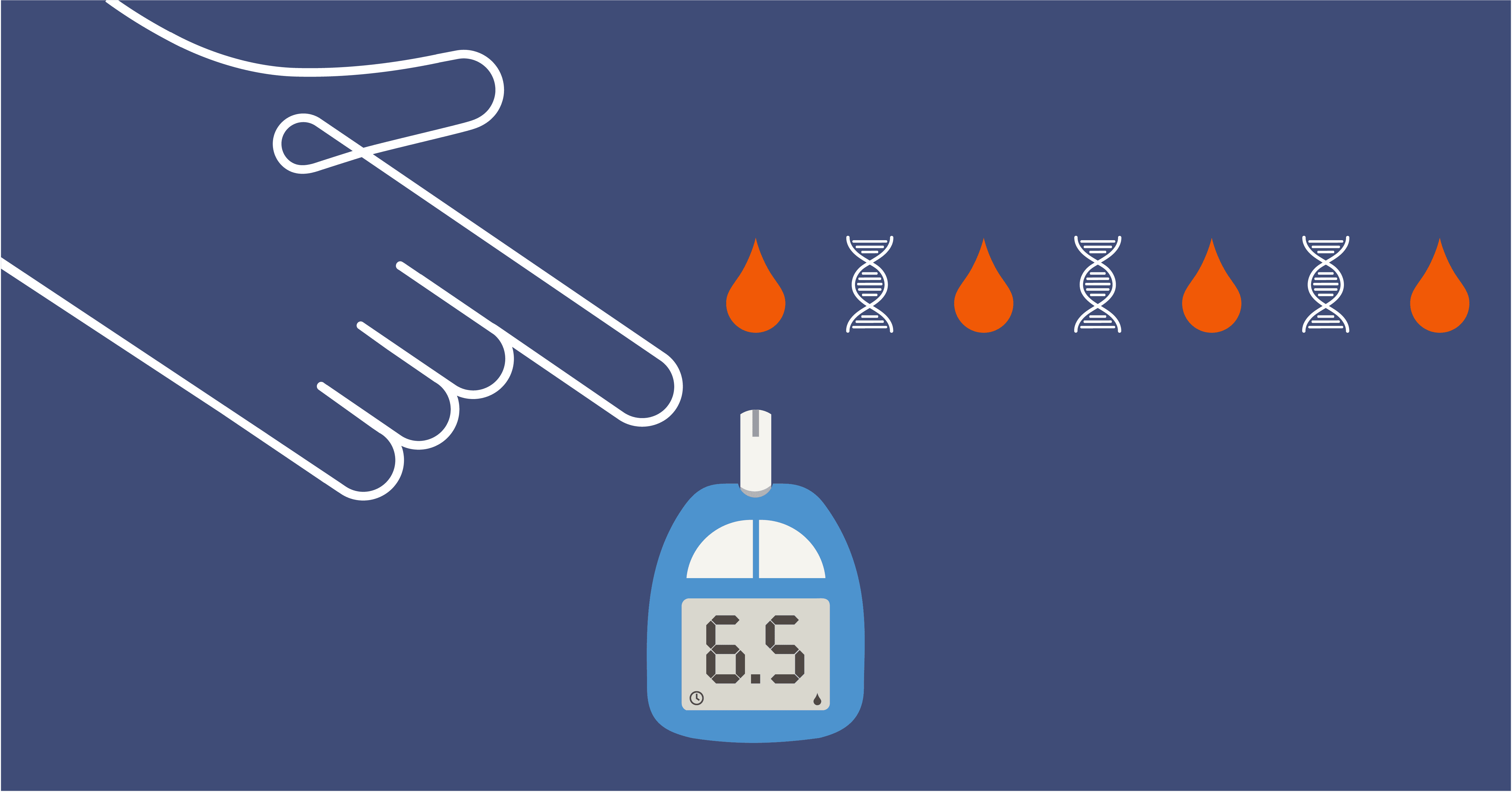Genetic testing can help some diabetics stop taking insulin

If you or a loved one have diabetes, you may be familiar with the struggles of insulin therapy. Calculating your dose and injecting yourself isn’t fun, of course. And if you forget to bring your shots with you, it can turn into a medical emergency. But studies have revealed that up to 5 percent of individuals with diabetes have an inherited form that is responsive to different types of medications and may actually eliminate the need for insulin injections.
This form of diabetes is sometimes referred to as “Type 3” or “Type 1.5,” but it’s more often known as Maturity Onset Diabetes of the Young (MODY). MODY is often undiagnosed due to its similarities to both Type 1 and Type 2 diabetes. In fact, the only way to properly identify MODY is through genetic testing.
To understand MODY, it’s important to understand diabetes in general
To understand MODY, it’s important to understand diabetes in general. It all starts with insulin. When you eat a meal, sugar from the food enters your bloodstream where it can be used by your cells, but they require insulin to do so. Insulin is made in the pancreas in beta cells, which sense sugar in the blood and respond by releasing insulin, thereby helping the body get energy.
Diabetes develops when either a person’s pancreas makes too little insulin, or their cells don’t respond properly to the insulin that’s produced. This results in high levels of sugar in the bloodstream, because the sugar can’t enter the body’s cells. In Type 1 diabetes, this happens because the pancreas doesn’t release enough insulin; in Type 2 diabetes, cells resist the insulin that is produced.
The causes of MODY include both of these mechanisms. MODY is a genetic diagnosis that involves a change in the DNA inherited from your parents. The most common form of this condition comes from a variation in a gene called HNF-1a that prevents the pancreatic beta cells from sensing sugar in the blood. Without the ability to sense sugar, they don’t know when to release insulin. Because of this, the symptoms of MODY look a lot like the symptoms of Type 1 diabetes.
Identifying MODY—as opposed to Type 1 diabetes—can have significant benefits for individuals who are already taking insulin. In many cases, people who have MODY can stop taking insulin in exchange for a pill called a sulfonylurea that can be taken once a day. Sulfonylureas help your pancreas release more insulin. They can be less expensive than an insulin regimen, and the best part? They don’t require injections.
A change in treatment can also be appropriate for individuals with another common form of MODY that is caused by a variation in the GCK gene. Like the HNF-1a variant, it can hamper the release of insulin by pancreatic cells. In individuals with just one copy of the GCK variant from one of their parents (this is called being heterozygous for the gene variant), the body manages blood glucose levels well. Long-term studies show that individuals with heterozygous GCK variants do not require treatment so long as they maintain a healthy lifestyle.
It’s a lot of information to take in. But basically, there are a few situations where you may consider genetic testing for MODY:
- You have a family history of diabetes, especially involving the types described below;
- Any members of your family have received a MODY diagnosis;
- You’ve been diagnosed with Type 1 diabetes with abnormal blood results (that is, your bloodwork has a lack of autoimmune markers—some doctors will refer to this as “atypical Type 1 diabetes”); or
- You’ve been diagnosed with Type 2 diabetes but have a low to normal body mass index (BMI).